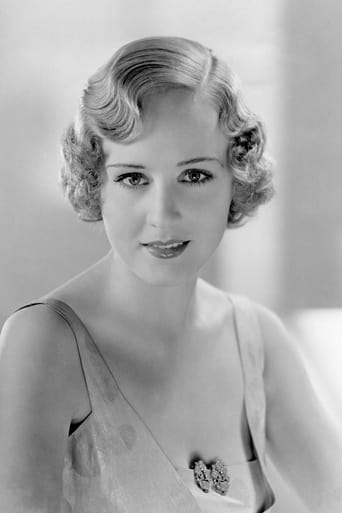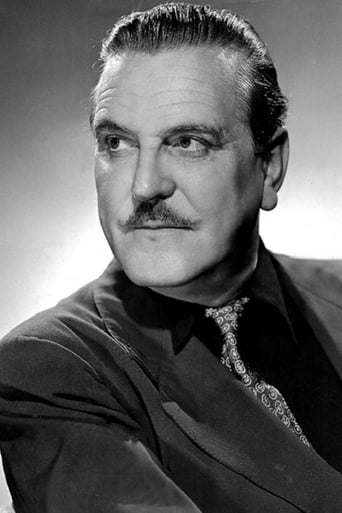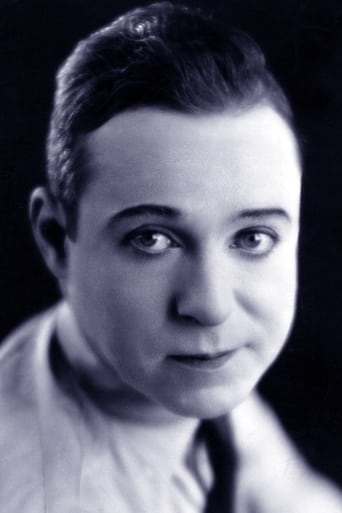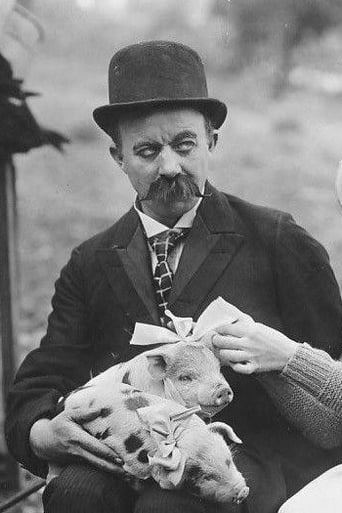Vashirdfel
Simply A Masterpiece
Moustroll
Good movie but grossly overrated
Seraherrera
The movie is wonderful and true, an act of love in all its contradictions and complexity
cstotlar-1
This is Rodgers and Hart at their level worst. The tunes aren't very tuneful and the words creak with age. Jolson over-acted least in this film and his endless spiels were left out or at least curtailed. There wasn't any black-face in this but there was a little black actor who, from his part in the movie, might just as well have been in black-face given the script. There is music everywhere in this film - when the characters are singing, of course, and when they are just acting or when there aren't any characters to be seen, and this omnipresence is often nerve-wracking and tiring at least. The great, great Harry Langdon of silent days shows up in a minor role here. His ego caused his immediate demise a few years before when he had fired all those around him responsible for his success and went on his own with disastrous results. Here he plays the part of Egghead with some dialog.
theowinthrop
I see this film and love it, but I also wish to cry a little.The image of Al Jolson, to this day, is the first star of sound movies who appeared in minstrel make-up. It has damaged his historical record in a way that is hard to question. While Jolson did show up in many scenes in his films without burnt cork on his face, his show stoppers were usually his "Mammy" numbers. So people will watch him in a few films (most notably THE JAZZ SINGER, ROSE OF WASHINGTON SQUARE, and STEPHEN FOSTER) but they will not watch films like WUNDERBAR or GO INTO YOUR DANCE. You'll notice that the films ROSE OF WASHINGTON SQUARE and STEPHEN FOSTER were late in his film career, when he was supporting Tyrone Power, Alice Faye, and Don Ameche, and (in the former) the main story concentrated on Faye, and the latter was a historical film (or claimed to be) set in a period when minstrels (Jolson's "Edwin Christy") were perfectly acceptable.HALLALUJAH, I'M A BUM is a notable musical for several reasons: Jolson is able to perform in a relatively relaxed mode as a hobo - the "Mayor of Central Park". He is also shown as egalitarian, traveling around with his friend Edgar Connors (who is an African-American). The film was one of a series of musicals done in Hollywood by Richard Rodgers and Lorenz Hart (who appear in cameo parts in this film) where the dialog changes from regular speech into a singing speech the characters all join in on. This was done with George M. Cohan, Jimmy Durante, and Claudette Colbert in THE PHANTOM PRESIDENT the year before, and would reach its fruition in the film LOVE ME TONIGHT. The score is above average, with one real standard: "YOU ARE TOO BEAUTIFUL". It has a curious view on economics and happiness, due in part to the atmosphere of the Great Depression. And there are some nice side features: Frank Morgan as the Mayor of New York, Madge Evans as his girlfriend, and Harry Langdon in an odd part as a leftist part-time hobo who is also a street cleaner. Langdon (unpopular with the other hobos in general) is not the only silent film comic in the film. Chester Conklin plays a friendly carriage driver. Another hobo is played by W.C.Fields occasional performer Tammany Young.The film follows Jolson's "Bumper" on his winter vacation in the South and notes his close friendship with Morgan's Mayor. There are hints about a current scandal in New York City there: Morgan frequents the Central Park Casino with Evans for lunch and dinner. The Casino was frequented in the late 1920s and 1930s by then New York City Mayor Jimmy Walker and his girlfriend Betty Compton. Jolson stumbles onto a purse (Evans) that contains a $1,000.00 bill. He tries to return it, but Evans (after a quarrel with Morgan) has left her apartment. Subsequently Jolson does meet Evans when he rescues her in a suicide attempt that leaves her with amnesia. He falls for her, and decides to take a job to take care of her, and eventually marry her. In the meantime Morgan is troubled by Evans vanishing so totally, and starts drinking heavily. I won't go into the film's conclusion.The film shows that being a hobo means having unlimited freedom, and a lack a pressure from the cares of the world. Most of the talk-sing songs deal with the relative happiness of the hobos. Only Langdon shows the irony of the situation. He feels the world will only be set right when everyone has a job, and supports themselves. He sees a type of Communist happiness in the future. He also sees that the hobos, by cadging and living off working people and businesses (Jolson gets leftovers from the Casino) are as parasitic as the very rich. These views make Langdon unpopular generally with the hobos. Only Jolson really tolerates him at all.It is a unique musical for its time, and a welcome addition to Jolson's work. Certainly well worth viewing. But it still saddens me: if only Jolson could have made more films like this one.
PWNYCNY
If anyone doubts that Al Jolson was one of Hollywood's greatest and most versatile performers, then watch this movie. Everything about this movie is excellent and entertaining. The movie has a great story, excellent, spirited acting, and an engaging, dynamic script, most of which is said in rhyme. The movie is also a remarkable commentary on social and economic inequalities in modern society as the "bum" is not only a victim but a hero who offers hope for the downtrodden and encourages all not to lose heart, to stay engaged and to try to enjoy life with as few worries as possible. Especially surprising was Frank Morgan who gives a powerful portrayal as a big-city mayor who is in love. Nothing in this movie is corny. It tells a story, has lots of action, has wonderful characters and is both uplifting and highly entertaining.Another interesting feature of this movie is that it is performed by actors and actresses who, for the most part, are all but forgotten today. Al Jolson is still an icon, but Harry Langdon, Madge Evans, Chester Conklin, Edgar Connors ... they were excellent, and all but forgotten. A really marvelous movie.
funkyfry
Slap-happy musical film that tries to use music and images together to meld a new format -- and ends up entertaining and likeable. Many of the songs are "recited" in operatic fashion, as when Jolson, the "Mayor of Central Park" (a famous bum) sings his case in court against a singing tribunal that he's been brought before on chargest of betraying his office by taking a job at a bank. A wonderful tracking shot introduces his job through sucessive levels of importance, beginning with high rollers and ending up with lyricist Lorenz Hart telling a customer he doesn't have a dime to give him. After we see all the varying levels of importance in the bank, we finally come on Jolson and his friend, doing the banking equivalent of peeling potatoes. Wonderful charm of Jolson and Langdon is dulled slightly by Morgan and Evans' stiff leads. Rodgers music and Hart's lyrics are splendid, making this one of the most original, best written original musicals of all time. It should be noted that in his years later working with Oscar Hammerstein, Rodgers only wrote one original play for film (excluding the televised "Cinderella") -- "State Fair" -- which in my opinion, though charming, has got nothing on "Hallelujah, I'm a Bum!" After the failure of this and several other Rodgers/Hart film projects, the duo returned to Broadway to become almost its only reliably successful writers in the later 30s. They left behind this little Hollywood gem to be rediscovered.





